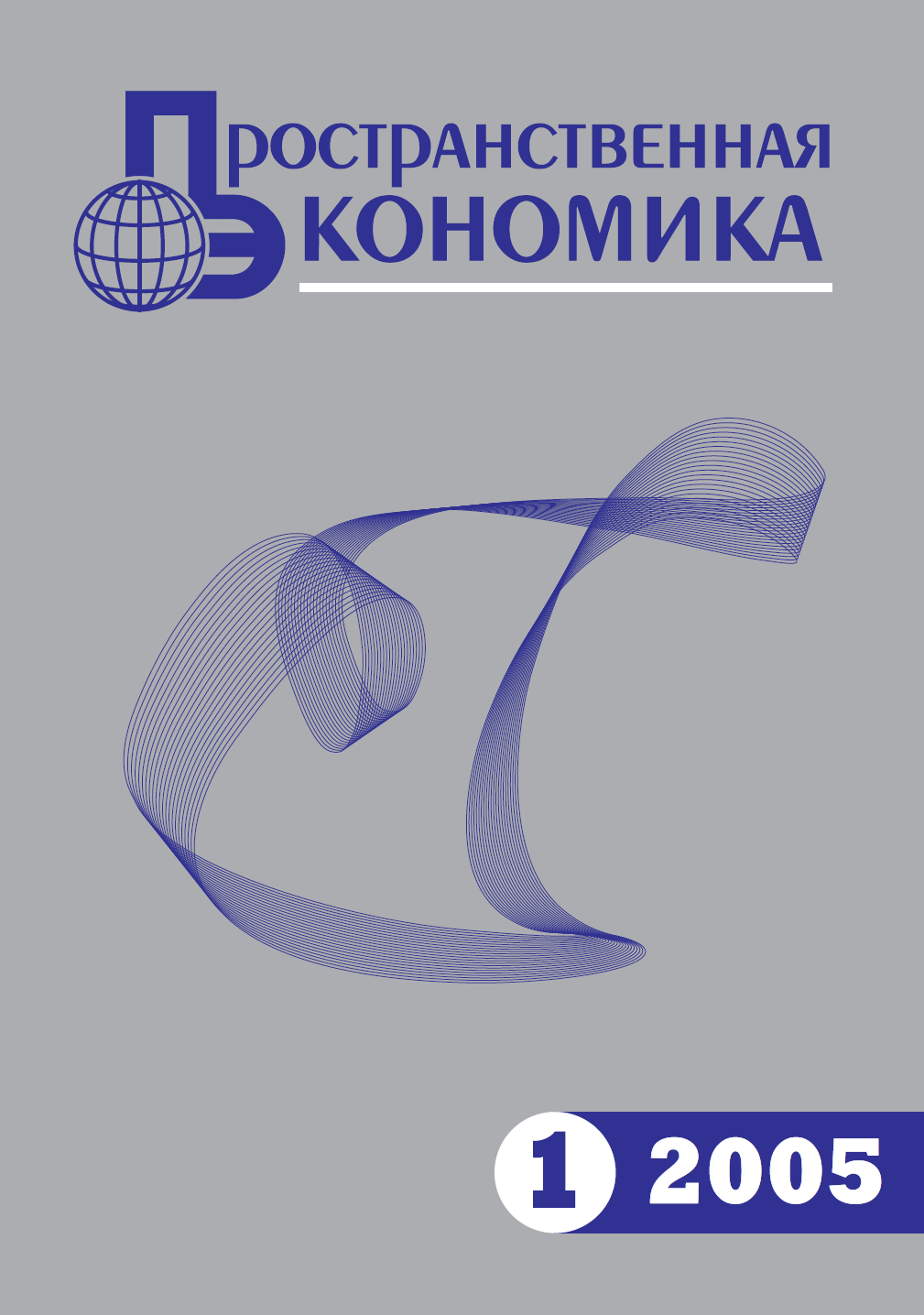| In the section | Articles |
| Title of the article | Processes of Integration and Fragmentation of Economic Space: The Structure of Settlement Systems |
| Pages | 81—99 |
| Author 1 | Alexander Pavlovich Goryunov Candidate of Economics, Deputy Director Economic Research Institute FEB RAS 153, Tikhookeanskaya St., Khabarovsk, Russia, 680042 This email address is being protected from spambots. You need JavaScript enabled to view it. ORCID: 0000-0001-7944-9422 |
| Author 2 | Anna Vasilyevna Belousova Candidate of Economics, Senior Research Fellow Economic Research Institute FEB RAS 153, Tikhookeanskaya St., Khabarovsk, Russia, 680042 This email address is being protected from spambots. You need JavaScript enabled to view it. ORCID: 0000-0002-8780-8146 |
| Abstract | This work presents a study of processes of integration and fragmentation caused by the polarization of economic space. Under integration in economic space the authors understand the formation of new and transformation of existing settlement systems, while fragmentation is the dissolution of settlement systems and their transformation into loosely connected settlement networks. The study focuses on the structure of settlement systems. Authors propose a new method for studying the structure of settlement systems, which combines the use of factor analysis, multidimensional scaling, and cluster analysis. The proposed method utilizes the maximum of available information about the social-economic status of settlements to reveal regularities in their spatial organization. The authors test the proposed method on 35 large cities of the Central and Volga federal districts of Russia, which comprise the spatial surroundings of Moscow. The authors find four groups of cities forming the core of the settlement system centered around Moscow, a group of four cities forming a buffer zone around that system, as well as four cities in the studied sample which do not participate in the settlement system |
| Code | 332+331 |
| DOI | 10.14530/se.2017.4.081-099 |
| Keywords | integration ♦ fragmentation ♦ structure of settlement system ♦ economic space ♦ cities |
| Download | |
| For citation | Goryunov A.P., Belousova A.V. Processes of Integration and Fragmentation of Economic Space: The Structure of Settlement Systems. Prostranstvennaya Ekonomika = Spatial Economics, 2017, no. 4, pp. 81–99. DOI: 10.14530/se.2017.4.081-099. (In Russian). |
| References | 1. Demyanenko A.N. Russian Far East: The Formation of Economic Macroregion. Regionalistika [Regionalistics], 2017, vol. 4, no. 2, pp. 5–19. DOI: 10.14530/reg.2017.2. (In Russian). 2. Zubarevich N.V. Changes of Center-Periphery Configuration of the Post-Soviet Space. Vestnik Evrazii = Acta Eurasica, 2001, no. 3, pp. 5–21. (In Russian). 3. Zubarevich N.V. Polarization of Cities as a Consequence of the Crisis of 90-ies. Vestnik Evrazii = Acta Eurasica, 2001, no. 1, pp. 5–29. (In Russian). 4. Lappo G.M. The Geography of Cities. Moscow, 1997, 480 p. (In Russian). 5. Tolstova Yu.N. Foundations of Multidimensional Scaling. Moscow, 2006, 160 p. (In Russian). 6. Treyvish A.I. Mobility and Development of Society in the Pulsating Space. Geography of World Development. Issue 3: Collection of Scientific Works. Moscow, 2016, pp. 16–38. (In Russian). 7. Kim J.-O., Mueller Ch.W., Klecka W.R. and etc. Factorial, Discriminant and Cluster Analysis. Translated from English. Edited by I.S. Enyukov. Moscow, 1989, 215 p. (In Russian). 8. Cronon W. Nature’s Metropolis: Chicago and the Great West. New York: W.W. Norton & Company, 1991, 592 p. 9. Dash Nelson G., Rae A. An Economic Geography of the United States: From Commutes to Megaregions. PLoS ONE 11(11): e0166083, 2016. DOI: 10.1371/journal.pone.0166083 10. Everitt B.S., Hothorn T. A Handbook of Statistical Analyses Using R. Available at: https://cran.r-project.org/web/packages/HSAUR/vignettes/Ch_multidimensional_scaling.pdf (accessed September 2017). 11. Hagler Y. Defining U.S. Megaregions. Regional Plan Association. America 2050. New York, 2009. Available at: (accessed September 2017). 12. Khanna P. Connectography: Mapping the Global Network Revolution. New York: Weidenfeld & Nicolson, 2016, 496 p. 13. Kotkin J., Schill M. A Map of America’s Future: Where Growth Will Be over the Next Decade. New Geography, 2013, 09 April. Available at: http://www.newgeography.com/content/003914-a-map-of-americas-future-where-growth-will-be-over-the-next-decade (accessed October 2017). |
| Financing | This research was supported by a grant from the Russian Foundation for Basic Research. No. 16-02-00300 'Processes of integration and fragmentation in the economic space of Russia' |
| Date |
